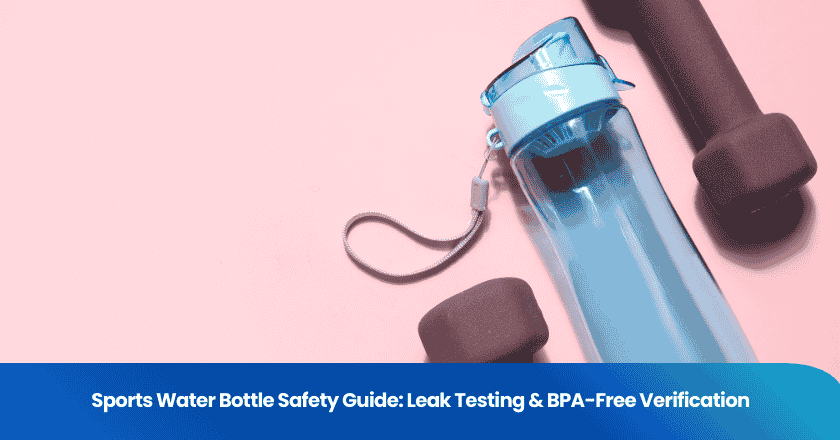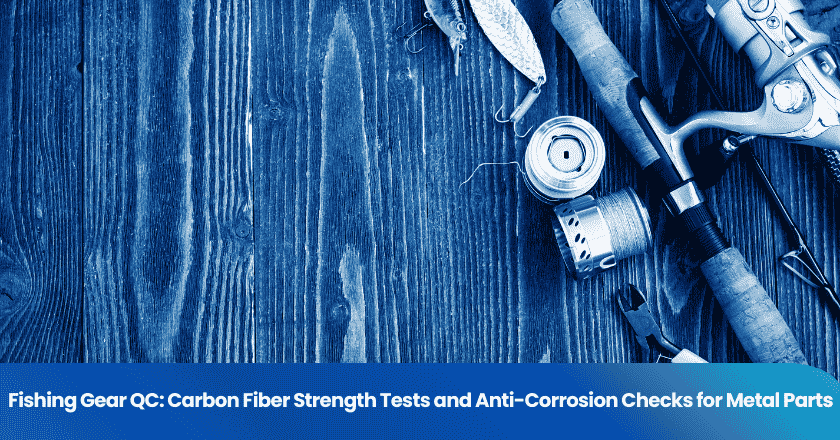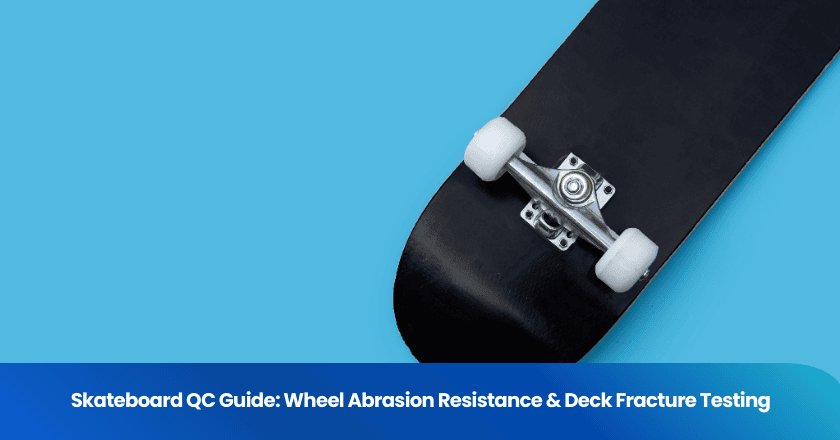
Third-party inspection services play a critical role for companies sourcing from China. These services help importers avoid costly mistakes by identifying defects before products leave the factory. In the context of 3rd party inspection China, inspectors act as independent experts who verify product quality, safety, and compliance. Many importers seek third-party inspection services to address concerns about necessity, risk avoidance, and the limitations of relying solely on suppliers or in-house checks. By using third-party inspection, businesses gain confidence in their supply chain and reduce the risk of non-compliance.
Key Takeaways
- Third-party inspections catch product defects early, helping importers avoid costly returns and maintain high quality.
- These inspections ensure products meet safety and regulatory standards, preventing customs delays and legal issues.
- Using third-party checks reduces supply chain problems like late deliveries, wrong quantities, and damaged goods.
- Independent inspectors provide unbiased, expert assessments that in-house teams may miss, improving trust and decision-making.
- Importers should schedule inspections at key production stages and choose providers with strong experience and clear communication.
What Are They?
Inspection Types
Importers rely on several types of inspections to safeguard their supply chain. The most common is the pre-shipment inspection. This process takes place when production finishes but before goods leave the factory. Inspectors check product quality, packaging, and labeling. They also verify quantities and ensure that items meet agreed specifications. Other inspection types include during-production checks, which help identify issues early, and container loading inspections, which confirm that products load correctly and securely. Some companies request initial production inspections to assess raw materials and components before manufacturing begins.
Tip: Pre-shipment inspection remains the most effective way to catch defects before products ship. Importers who use this method consistently report fewer returns and complaints.
How They Work
Third-party inspection services operate independently from suppliers and buyers. Inspectors visit factories in China and follow strict protocols. They use sampling methods to select random units for testing. During a pre-shipment inspection, inspectors examine physical attributes, conduct functional tests, and review documentation. They record findings in detailed reports, often including photos and measurements. These reports help importers make informed decisions about accepting or rejecting shipments. The process ensures transparency and accountability throughout the supply chain.
| Inspection Stage | Purpose | Timing |
|---|---|---|
| Initial Production | Assess raw materials | Before manufacturing |
| During Production | Monitor quality mid-process | Midway through |
| Pre-Shipment Inspection | Verify finished goods | After production |
| Container Loading | Confirm secure loading | Before shipment |
Pre-shipment inspection provides a final safeguard. Importers who skip this step risk receiving defective or non-compliant products. Third-party inspection offers an unbiased assessment, helping businesses avoid costly mistakes and maintain high standards.
3rd Party Inspection China: Key Risks
Quality Issues
Importers face significant risks when they skip 3rd party inspection China. Factories may deliver products with defects, inconsistent finishes, or incorrect specifications. A 2022 industry report found that companies using 3rd party inspection China reduced defect rates by up to 60% compared to those relying solely on supplier checks. Inspectors catch problems such as poor stitching, faulty electronics, and substandard materials before goods leave the factory. Product quality remains the top concern for importers. When inspectors identify issues early, companies avoid costly returns and damaged reputations.
Note: Skipping 3rd party inspection China often leads to receiving goods that fail to meet expectations. Importers who prioritize import quality control protect their investments and maintain customer satisfaction.
Compliance Problems
Regulatory compliance presents another major risk for importers. Many countries enforce strict standards for safety, labeling, and environmental impact. 3rd party inspection China helps companies verify that products meet these requirements. Inspectors check for correct certifications, proper labeling, and adherence to international regulations. In 2023, customs authorities rejected over 15% of shipments from China due to non-compliance. Importers who neglect compliance checks risk fines, shipment delays, and legal action. Product quality extends beyond physical attributes; it includes meeting all regulatory standards.
| Compliance Risk | Potential Impact |
|---|---|
| Missing Certifications | Customs rejection |
| Incorrect Labeling | Fines and recalls |
| Unsafe Materials | Legal liability |
Supply Chain Risks
Supply chain disruptions can occur when importers overlook 3rd party inspection China. Delays in delivery, incorrect quantities, and damaged packaging threaten business operations. Inspectors verify that products ship on time and in proper condition. They confirm that factories follow agreed schedules and pack goods securely. Real-world data shows that companies using 3rd party inspection China experience 40% fewer supply chain interruptions. Product quality assurance at every stage reduces the risk of late shipments and lost revenue.
- Common supply chain risks:
- Late deliveries due to unresolved defects
- Incorrect quantities shipped
- Damaged packaging leading to product loss
Tip: Consistent use of 3rd party inspection China strengthens supply chain reliability and supports long-term business growth.
Benefits of Third-Party Inspection Services
Quality Improvement
Third-party inspection services deliver measurable improvements in product quality. Inspectors identify defects, inconsistencies, and deviations from specifications before goods leave the factory. They use standardized protocols and sampling methods to ensure every batch meets the required standards. Companies that invest in third-party inspection services often see a significant drop in customer complaints and product returns. These services help maintain high product quality by catching issues early and providing actionable feedback to manufacturers.
Note: Consistent use of third-party inspection services leads to a more reliable supply chain and fewer surprises upon delivery.
Manufacturers respond to inspection findings by improving their processes. This cycle of feedback and correction raises the overall level of product quality. Importers who prioritize quality assurance through third-party inspection services gain a competitive edge in their markets.
Risk Reduction
Third-party inspection services play a vital role in risk management. Importers face many risks, including defective products, shipment delays, and financial losses. By using third-party inspection services, companies reduce the likelihood of receiving substandard goods. Inspectors verify that products meet agreed specifications and that packaging protects items during transit.
A single missed defect can result in costly recalls or lost business. Third-party inspection services act as a safeguard, catching problems before they escalate. Importers who rely on these services experience fewer disruptions and enjoy greater peace of mind.
- Key risk reduction benefits:
- Early detection of defects
- Prevention of shipment delays
- Lower risk of financial loss
Third-party inspection services provide a layer of protection that in-house teams or suppliers alone cannot match.
Compliance Assurance
Regulatory compliance remains a top concern for global importers. Third-party inspection services ensure that products meet all relevant safety, labeling, and environmental standards. Inspectors check documentation, certifications, and labeling accuracy. They confirm that products comply with both local and international regulations.
Tip: Third-party inspection services help avoid customs delays, fines, and legal issues by verifying compliance before shipment.
Importers who use third-party inspection services benefit from comprehensive quality assurance services. These services cover every aspect of compliance, from material safety to packaging requirements. Companies that prioritize compliance build stronger reputations and avoid costly setbacks.
Trust Building
Trust forms the foundation of successful business relationships. Third-party inspection services foster trust between importers, suppliers, and customers. Independent inspections demonstrate a commitment to transparency and accountability. Suppliers know that their products will undergo rigorous checks, motivating them to maintain high standards.
Customers also benefit from third-party inspection services. They receive products that meet expectations for quality and safety. Importers who use these services can confidently market their goods, knowing they have met all requirements.
| Trust Building Benefits | Impact on Business |
|---|---|
| Transparent inspections | Stronger supplier relations |
| Consistent product quality | Higher customer satisfaction |
| Reliable documentation | Enhanced brand reputation |
Third-party inspection services support long-term partnerships and sustainable growth. They help companies maintain standards, meet regulations, and deliver consistent product quality.
Third-Party vs. In-House Checks
Objectivity
Objectivity stands as a major advantage when comparing third-party and in-house checks. Internal teams may develop biases over time. They often work closely with suppliers or production staff. This relationship can influence their judgment. Third-party inspection teams operate independently. They do not have personal stakes in the outcome. Their only goal is to verify that products meet the required standards.
Note: Independent inspectors provide unbiased reports. Importers can trust these findings when making decisions about shipments.
A third-party inspection team follows strict protocols. They use internationally recognized sampling methods. This approach ensures that every batch receives the same level of scrutiny. In contrast, in-house teams may overlook issues due to familiarity or internal pressure. Objectivity from an external team helps importers avoid costly mistakes.
Expertise
Expertise also separates third-party and in-house checks. Third-party inspection professionals often have specialized training. They understand industry standards, testing methods, and regulatory requirements. Many have years of experience across different product categories.
| Comparison Area | Third-Party Inspection | In-House Checks |
|---|---|---|
| Training | Specialized, ongoing | Varies by company |
| Experience | Broad, multi-industry | Limited, internal |
| Standards Used | International | Company-specific |
In-house teams may lack exposure to the latest industry practices. They might not have access to advanced testing equipment. Third-party inspection teams bring updated knowledge and technical skills. Their expertise helps identify subtle defects and compliance issues that internal staff might miss.
Importers who rely on external experts gain a higher level of assurance. They benefit from objective assessments and deep industry knowledge. This combination supports better decision-making and reduces the risk of receiving substandard goods.
How to Use Inspection Services
Choosing a Provider
Selecting the right provider for third-party inspection services requires careful evaluation. Importers should start by reviewing the provider’s experience in the relevant product category. Providers with a strong track record in third-party inspection services offer better reliability. They should have inspectors who understand international standards and local regulations. Importers often request sample reports to assess the provider’s attention to detail.
A provider must demonstrate transparency in their third-party inspection services. They should share clear protocols and explain their sampling methods. Importers benefit from providers who communicate inspection results quickly. Many companies compare pricing structures, but quality and responsiveness matter more than cost alone.
| Criteria | Why It Matters |
|---|---|
| Industry Experience | Ensures relevant expertise |
| Reporting Quality | Supports informed decisions |
| Communication Speed | Reduces delays |
| Regulatory Knowledge | Prevents compliance issues |
Tip: Importers should verify that the provider’s third-party inspection services cover all stages of production, from raw materials to container loading.
Best Practices
Importers maximize the value of third-party inspection services by following proven best practices. They schedule inspections at critical points in the production process. Early inspections catch problems before they escalate. Importers provide clear specifications and quality standards to guide third-party inspection services.
Effective communication with the provider ensures that inspectors understand expectations. Importers review inspection reports promptly and address any issues with suppliers. They use third-party inspection services to monitor corrective actions and verify improvements.
- Schedule inspections at multiple stages
- Share detailed product requirements
- Respond quickly to inspection findings
- Track supplier improvements over time
Importers who integrate third-party inspection services into their sourcing strategy see fewer defects and stronger compliance. Consistent use of third-party inspection services builds trust and supports long-term business growth.
Third-party quality checks stand as a critical safeguard for importers sourcing from China. These inspections reduce risks, ensure compliance, and maintain product quality. Companies that make third-party inspections a standard part of their process protect their reputation and bottom line.
Next steps for importers:
- Evaluate current inspection strategies
- Schedule third-party checks at key production stages
- Review inspection reports and address issues promptly
Consistent quality checks support long-term business success and customer trust.
FAQ
What does a third-party inspection cover in China imports?
A third-party inspection covers product quality, quantity, packaging, labeling, and compliance with regulations. Inspectors check samples from each batch and provide detailed reports.
Tip: Importers should review these reports before approving shipments.
How often should importers schedule inspections?
Importers should schedule inspections at critical production stages: before manufacturing, during production, before shipment, and during container loading.
Early inspections catch problems
Final checks confirm quality
Can third-party inspections prevent customs delays?
Yes. Inspectors verify certifications, labeling, and compliance with international standards. This process reduces the risk of customs rejection and shipment delays.
| Benefit | Impact |
|---|---|
| Verified compliance | Faster clearance |
Are third-party inspections expensive?
Inspection costs vary by product type, location, and service scope. Many importers find that the expense is minor compared to the potential losses from defective or non-compliant goods.
Note: Investing in inspections protects business interests.
How do importers choose a reliable inspection provider?
Importers evaluate providers based on experience, reporting quality, communication speed, and regulatory knowledge.
- Request sample reports
- Check industry expertise
- Review client feedback
Grow your business with TradeAider Service
Click the button below to directly enter the TradeAider Service System. The simple steps from booking and payment to receiving reports are easy to operate.



